How Do Plants Make Their Food Class 4 Notes Science
Food: Necessity of Life
Every living thing needs food. It helps us to grow and carry out daily life activities.
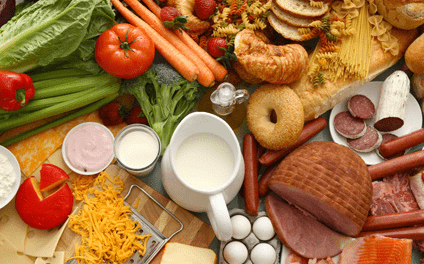 Food is the basic necessity of life.
Food is the basic necessity of life.
- Food is something that provides nutrients. Nutrients are substances that provide: energy for activity, growth, and all functions of the body
- When we are hungry, we eat food, maybe a sandwich or a banana.
- A squirrel usually gnaws nuts and a cat laps its milk, while a lion eats the flesh of other animals to get energy.
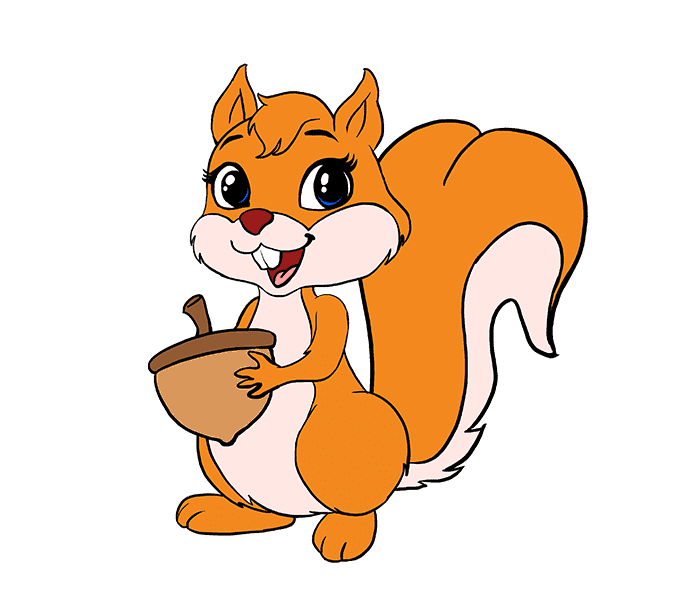 A squirrel gnaws nuts when it is hungry but plants need to make their own food to satisfy their hunger.
A squirrel gnaws nuts when it is hungry but plants need to make their own food to satisfy their hunger.
- But what about plants? How do they get the energy to grow and remain healthy?
Unlike animals, plants cannot wander in search of food. Thus, they make their own food. Leaves make food for the whole plant. So, they are called the food factory or the kitchen of a plant.
How Do Plants Make Their Food?
Most plants prepare food by the process of photosynthesis.
- The process by which leaves prepare food using water and minerals from the soil and carbon dioxide from the air in the presence of sunlight and chlorophyll is called photosynthesis.
- ‘Photo’ means ‘light’ and ‘synthesis’ means ‘putting together’.
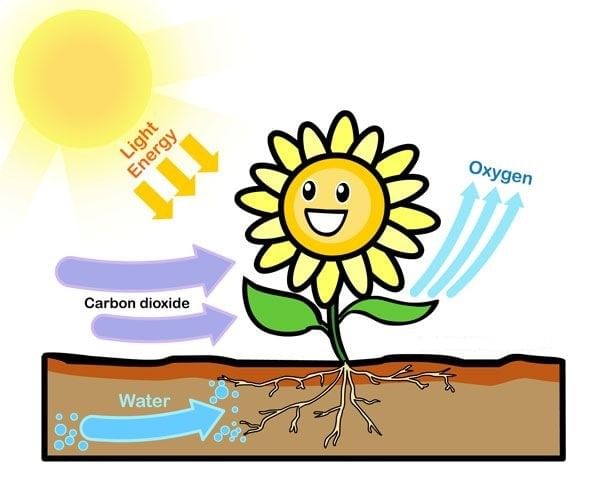 Photosynthesis in Plants
Photosynthesis in Plants
During the process of photosynthesis, food is prepared in the form of sugar. Oxygen is given out by the leaves.
Importance & Structure of a Leaf
Leaves provide food and air to help a plant stay healthy and grow.
- Through photosynthesis, leaves turn light energy into food.
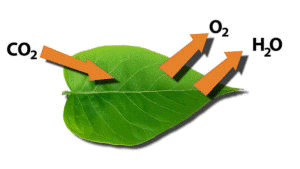
- Through pores or stomata, leaves “breathe” in carbon dioxide and “breathe” out oxygen
- A typical leaf has the following main parts. Let us study these parts.


Leaf Lamina
The lamina is the flat, green part of a leaf.Leaf Stalk
It is a part of a leaf that attaches the leaf lamina to the stem. It supplies water collected from the stem to the leaf.Midrib or Main Vein
Midrib is a thin tube that runs from the base to the tip of the leaf. It transports water and minerals to all parts of a leaf through side veins.Side Veins
The thinner tube-like structures arising from the midrib are called veins. These veins provide shape and support to the leaf.Stomata
The leaf contains tiny pores or openings called stomata (singular: Stoma). These are generally present on the lower surface of the leaf.
During photosynthesis, leaves take in carbon dioxide and give out oxygen and water vapor through stomata.
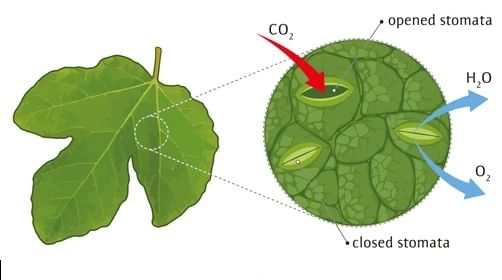 Stomata in Leaves
Stomata in Leaves
Chlorophyll
If we see a section of a leaf under a microscope, we will see that a leaf is made up of small sections. These sections contain chlorophyll, a green coloured substance that makes the leaf green.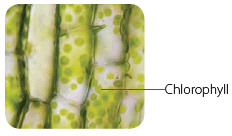
What Happens to the Food Made by the Plant?
- The food prepared by the plant is used for its own growth and to repair worn-out cells.
- Extra food is converted (into starch) and stored in different parts of the plant.
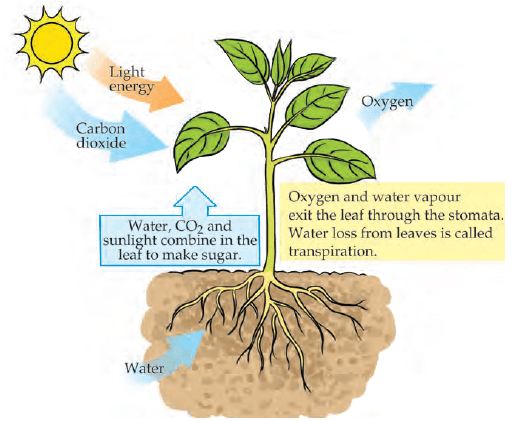 Photosynthesis
Photosynthesis
Storehouses of Food
- The extra food may be stored in the form of starch in different parts of plants such as fruits, stems, roots, leaves, flowers, and seeds.
- We often eat these parts of the plants that store food. Some of the plant parts that store food is given here:
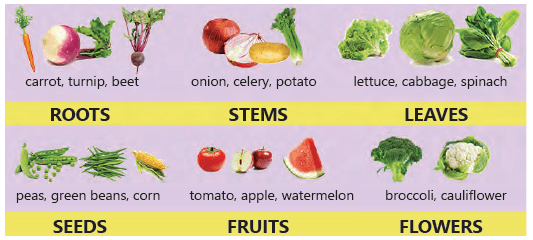 Part of Plants that store food.
Part of Plants that store food.
Interdependence of Plants and Animals
- Plants and animals depend upon each other.
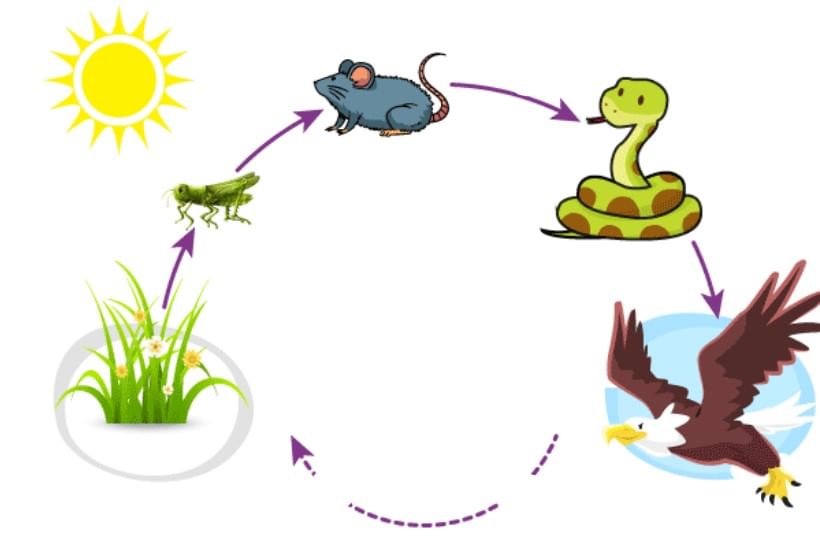
Animals (Including Humans) Depend on Plants
- Animals depend on plants for food. Herbivorous animals such as goats, cows, and deer directly depend on plants for food. Carnivorous animals get their food by eating other animals. Therefore, they also indirectly depend on plants for food.
- Animals depend on plants for oxygen given out during photosynthesis.
 Koalas consume eucalyptus trees
Koalas consume eucalyptus trees
- Many animals, such as monkeys, koalas, and parrots depend on plants for shelter.
Plants Depend on Animals
- Plants depend on animals for carbon dioxide that they give out during breathing.
- Plants depend on animals for nutrients in the soil. Animal wastes as well as their dead bodies provide nutrients to the soil.
- Plants depend on animals to disperse seeds to distant places so that new plants can grow at far-off places without overcrowding at one place. Thus both plants and animals need each other to survive. That is why we say that there is interdependence in nature.
Some Unusual Plants
There are some plants that are different from the usual green plants. Let’s find out more about them.
- The leaves of cactus plant are reduced to spines and cannot perform photosynthesis. The food is prepared by the green stem.
- Mushrooms and molds do not contain chlorophyll and are non-green. These plants lack the ability to make their food and therefore, obtain it from dead and decaying plants and animals.
- The leaves of croton may appear red, yellow, purple in addition to green. However, it does contain chlorophyll. The chlorophyll in its leaves is masked by the other colour pigments like red, yellow, purple, etc. Thus, photosynthesis occurs in croton also.

Plants That Do Not Make Their Food
Parasitic Plants
- Plants that obtain nutrition from other plants are called parasitic plants. The plants that provide nutrition are called host plants.
- Most of the parasitic plants do not undergo photosynthesis and are dependent totally on their host for nutrition. These are total parasites.
- For example, Cuscuta, commonly known as Dodder is a non-green, thread-like golden yellow plant. It penetrates into the stem and branches of the host to suck food from it.
- Some plants may still have green leaves and make some of their food through photosynthesis.
- It derives part of its nutrition from another plant. These are partial parasites. For example, mistletoe.
Insectivorous Plants
- Insectivorous plants are green plants that are able to make their own food but they grow in soil that lacks nutrients (minerals).
- These plants trap insects, kill them, digest and absorb nutrition (minerals) from their body.
- Some interesting examples of insectivorous plants are Pitcher plant, Sundew, Venus flytrap, and Bladderwort.
- Pitcher plant has modified leaves in the form of a tubular pitcher-like structure with a lid. The bottom of the pitcher has sweet nectar which attracts the insect. The insect slips down and gets digested by the plant.
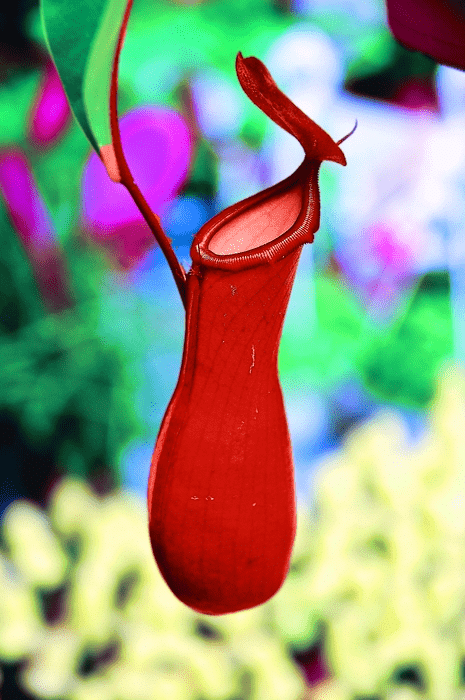 Pitcher Plant
Pitcher Plant - Venus flytrap also has modified leaves in the form of two small halves with stiff hair on each edge. As an insect comes near it, the two halves snap shut quickly. Then it secretes juices to digest the insect.
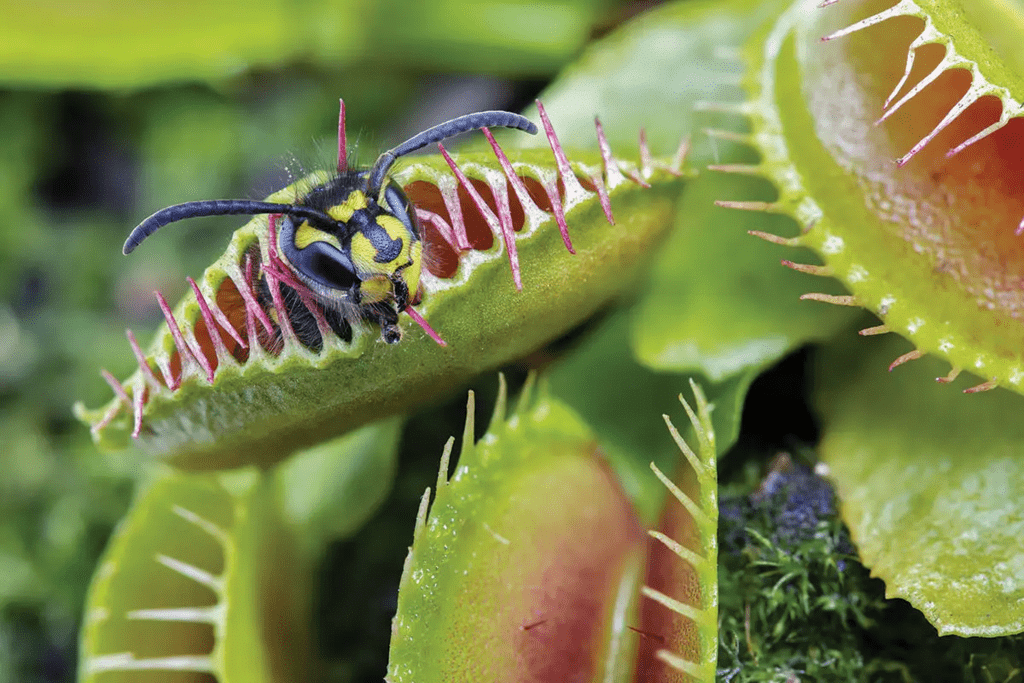 Venus Flytrap
Venus Flytrap - Leaves of Sundew are covered with numerous sensitive hair which glitter in the sun as dew-drops, hence the plant has its name. Insect which comes in contact with these hair gets entangled, killed and the nutrients are absorbed into the leaves.
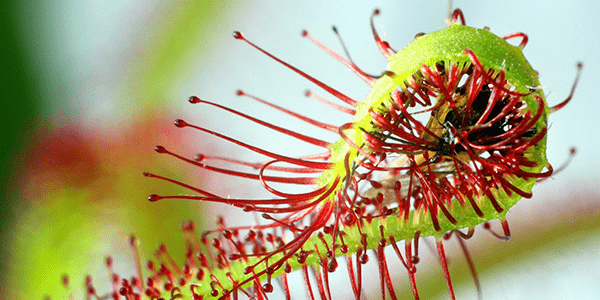 Sundews
Sundews
Scientist in Focus
Jan Ingenhousz (1730-1799),
Jan Ingenhousz
a Dutch physiologist, biologist and chemist is best known for the discovery of photosynthesis. In 1779, he discovered that in the presence of light, bubbles come out from green parts of the plants while in shade these bubbles stop. He identified this gas as oxygen. He also discovered that plants give off carbon dioxide in the dark.
|
48 videos|68 docs|51 tests
|
FAQs on How Do Plants Make Their Food Class 4 Notes Science
| 1. How do plants make their food? |  |
| 2. What is the importance and structure of a leaf? |  |
| 3. What happens to the food made by the plant? |  |
| 4. How are plants and animals interdependent? |  |
| 5. Are there any plants that do not make their food? |  |























